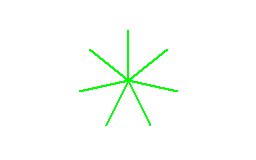Anchors for touch, usability of braille documents
Giuseppe Di Grande Updated the 04/27/2021 09:00
Try opening a document or electronic book, removing all the carriage returns and all the formatting, and then start reading it. Sure, you can read it, but don't you feel that sense of annoyance at reading a text that lacks visual reference points that orient and facilitate reading? The same discomfort is felt by people who read in Braille.
We can certainly say that a Braille document has its own degree of usability depending on the typographical rules that are applied to it.
Text highlights are paratextual elements that help those who read with their eyes and those who read with their touch. They disregard the syntax and semantics of words and are anchoring elements to allow quick identification of words, sentences, paragraphs, titles, etc..
The graphic effects for a printed text are multiple and combinable, being able to make use of different spaces, colors, sizes, shapes of characters. There are fewer tactile effects for touch, based on the presence or absence of dots, cells, lines, or other tactile elements.
The geometry of a Braille text can be an indicator to highlight specific parts of a document. For example, reducing the amount of characters per line for certain parts of a document can indicate to the tactile sense that that particular portion of text contains elements that are incidental to the main document. This is the case for lines containing headings, where a reduced line size is usually used.
Paragraph or paragraph indents are another widely used indicator. Indenting paragraphs by a few Braille cells indicates the start of a new paragraph, which is different from the normal distribution of text lines on the page.
Spacing lines are a strong indicator to highlight the change between sections, for example the separation of headings from the body of the text, or the beginning and end of special elements such as lists, tables, notes. A blank line of cells can also be detected very quickly using the simple touch of the palm of the hand, which is less sensitive than that of the fingers. Giving meaning to one or more blank lines is a clever way to anticipate or bring out specific parts of a text.
It is important not to overuse blank lines or spaces, because while one, two, or at most three blank lines can be a valuable adjunct to tactile reading, using too many could disorient and disrupt its continuity. An exception may be entire blank pages, which can be an indicator, for example, of the beginning of a new chapter or part.
A paratextual indicator can also be to always start a new chapter at the beginning of an odd page. Or separate the end of one chapter from the title of the next by two blank lines.
Separation lines can be formed by a precise geometry of dots and lines. It is important that the separators always have a tactile repetition whose meaning is given by the geometry of the dots and not by the literal meaning of the cells.
Indicators are also cells that are stamped outside the right-hand side of the page, for example in the left margin or the right margin. They serve to highlight the presence of very specific elements of a text. For example, a cell in the left margin might indicate a bookmark. Or a numeric cell in the right margin could indicate the presence of a title with an additional indication of its level.
As we have seen, there are also printing techniques for Braille typography that make Braille text more usable. Especially when preparing a document for educational use, it is appropriate to codify typographic rules to be applied throughout the document. These are tacit rules that the reader will learn while reading, which are applied only during the post-production of a document, that is, in that phase that follows the drafting of a document and precedes the actual printing.
Biblos allows to apply all these rules with extreme ease.
For further support you can subscribe the Biblos Group on Facebook.
